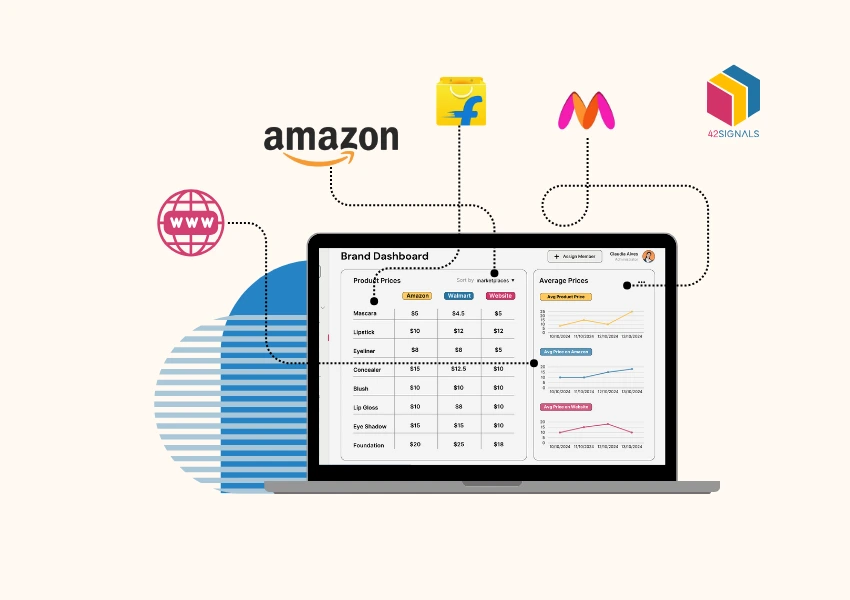Nestlé is a global food and beverage powerhouse, renowned for its diverse product portfolio, international reach, and commitment to quality. The company stands as a leader in the consumer goods industry, with roots dating back over 150 years.
Today, it holds a massive presence in over 190 countries, offering products ranging from baby food and bottled water to coffee, pet care, and confectionery.
We’ll look into the origins, growth, and success of Nestlé, and explore the company’s branding, business strategies, and social responsibilities.
The Origins of Nestlé
Nestlé’s story begins in 1867 in Vevey, Switzerland, when a pharmacist named Henri Nestlé developed a milk-based infant food, responding to a significant societal need. His breakthrough product, “Farine Lactée,” was designed to help babies who could not be breastfed.
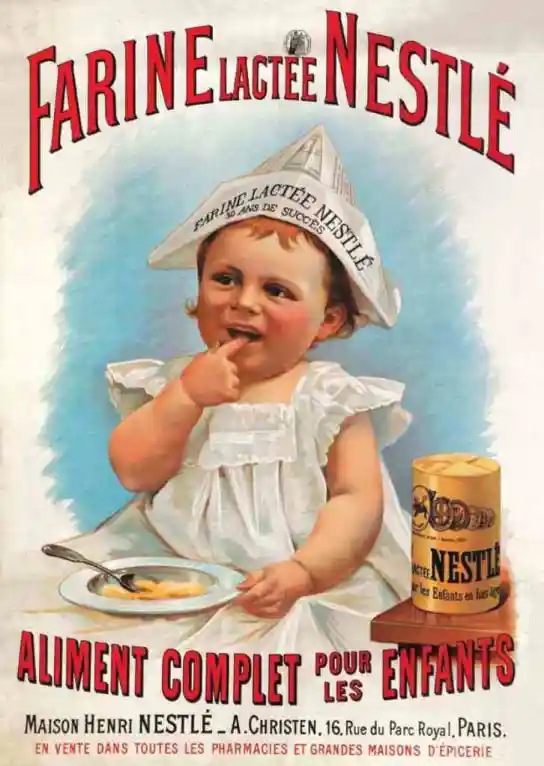
Image Source: Chocolate Class
The formula, which combined cow’s milk, wheat flour, and sugar, quickly gained popularity as a reliable source of nourishment for infants. The success of this product laid the foundation for what would become one of the world’s largest consumer goods companies.
By 1905, Nestlé had merged with the Anglo-Swiss Condensed Milk Company, forming a conglomerate that produced both condensed milk and infant food.
The company continued to expand its product offerings and geographic footprint throughout the 20th century, riding the wave of industrialization, globalization, and changing consumer demands.
Nestlé’s Growth in the Consumer Goods Industry
Nestlé’s growth trajectory is a case study in strategic expansion and diversification. As the company matured, it recognized the need to broaden its portfolio beyond infant food and dairy products to become a more comprehensive consumer brand company.
Image Source: Reddit
This strategy was critical to Nestlé’s transformation into a global giant.
Diversification of Product Portfolio
Nestlé’s expansion into other consumer goods sectors began in the 1920s when it introduced chocolate and instant coffee to its product line.
Nescafé, launched in 1938, became one of the world’s best-known coffee brands and remains a pillar of Nestlé’s success in the hot beverages market.
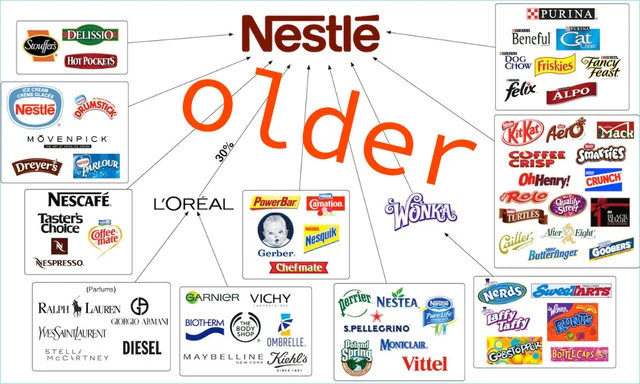
Image Source: Food Business News
The diversification into coffee, confectionery, and other sectors set the stage for more acquisitions and the introduction of new product lines, such as pet care and bottled water.
Key acquisitions over the years, such as Purina (pet care), Gerber (baby food), and San Pellegrino (bottled water), further cemented Nestlé’s place in the consumer goods landscape.
These acquisitions were not just about adding new products but also about gaining access to new markets and leveraging strong brand identities to boost Nestlé’s global appeal.
Expansion into Emerging Markets
Nestlé’s focus on international growth allowed it to tap into emerging markets, particularly in Asia, Latin America, and Africa.
By the 1990s, more than half of Nestlé’s sales were coming from outside Europe, driven by its aggressive push into these regions. By catering to local tastes and dietary preferences, Nestlé was able to integrate itself deeply into these economies.
One of Nestlé’s key strategies has been localizing its product offerings.
For example, in India, Maggi noodles have become a household staple, while in Japan, KitKat flavors cater to local palates, with varieties like green tea becoming immensely popular.
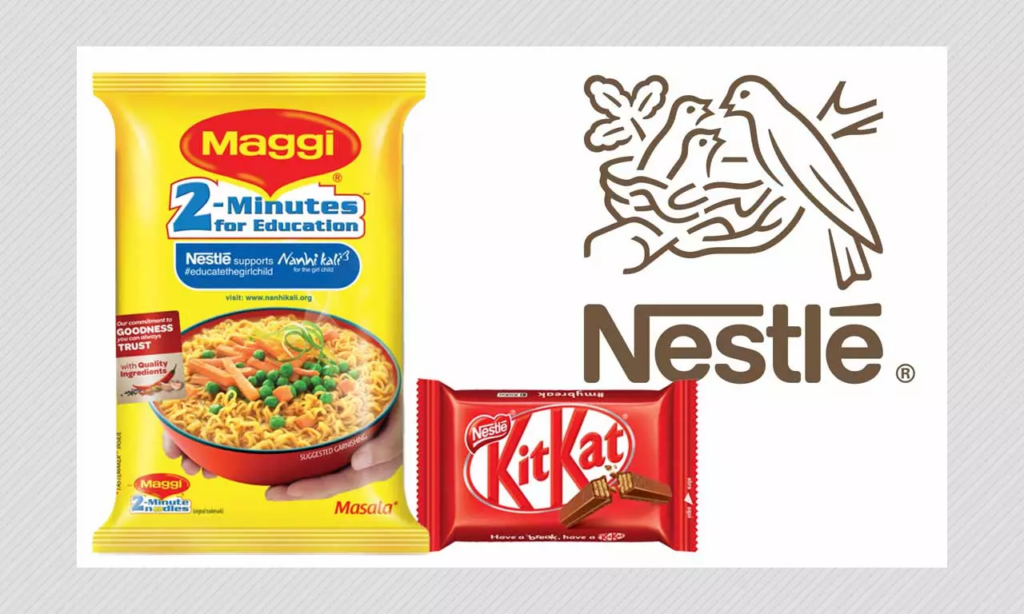
Image Source: Boom Live
By tailoring its products to meet the needs of different markets, Nestlé solidified its standing as a true multinational consumer goods corporation.
Branding and Marketing Strategy
Nestlé’s branding and marketing strategies have played a crucial role in its ability to dominate the consumer goods market. The company has a clear, consistent brand identity that focuses on health, wellness, and sustainability.
It seeks to be viewed as a brand that not only produces high-quality goods but also improves the quality of life for its customers through better nutrition and sustainability.
Nestlé Health and Wellness Focus
In recent years, Nestlé has increasingly positioned itself as a health and wellness company, reflecting growing consumer demand for healthier options.
This shift is evident in Nestlé’s acquisition of companies in the health and nutrition sectors, such as Atrium Innovations, which specializes in dietary supplements.
Nestlé has also made significant efforts to reformulate many of its existing products to reduce sugar, salt, and fat, while adding more natural and nutrient-dense ingredients. These changes reflect the company’s commitment to addressing public health concerns like obesity and diabetes, particularly in developed markets where consumers are more health-conscious.
Sustainability and Corporate Social Responsibility (CSR)
Nestlé has embraced sustainability as a core component of its brand. Its CSR initiatives are centered around environmental sustainability, water stewardship, and responsible sourcing.
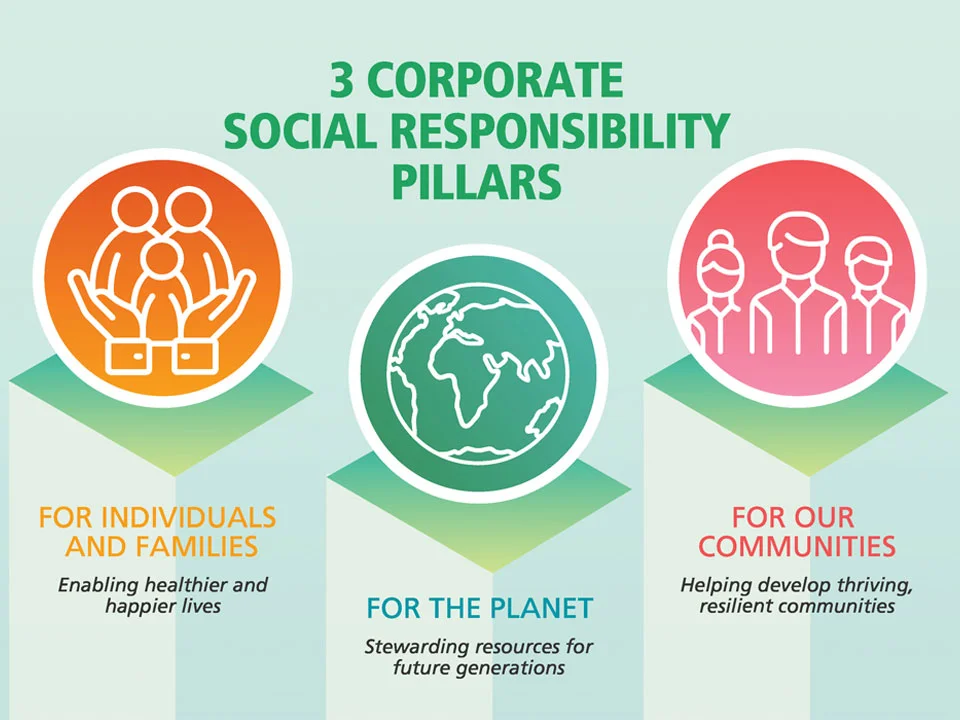
Image Source: Nestle Professional
The company has set ambitious goals to reduce its greenhouse gas emissions, achieve zero waste for disposal in its factories, and make all its packaging recyclable or reusable by 2025.
In terms of sourcing, Nestlé is committed to using ethically sourced ingredients, particularly for commodities like cocoa, coffee, and palm oil. This is in response to increasing consumer demand for transparency and sustainability in supply chains.
Consumer-Centric Marketing
Nestlé has consistently demonstrated a deep understanding of consumer needs and trends, and it tailors its marketing strategies accordingly. The company’s marketing campaigns are carefully crafted to resonate with specific demographics and cultural contexts.
Whether it’s the heartwarming advertisements for Nescafé or the fun, youthful branding of KitKat, Nestlé knows how to create emotional connections with its consumers.
Digital marketing has also become a key part of Nestlé’s strategy. The company has embraced social media and online platforms to engage with consumers, promote its products, and respond to feedback in real time.

Image Source: Sqli
The use of influencers and partnerships with popular online personalities has helped Nestlé stay relevant with younger consumers, further solidifying its presence in the global consumer goods industry.
Nestlé’s Competitive Advantages
Nestlé has managed to stay at the top of the global consumer goods market by leveraging several key competitive advantages:
Global Scale and Supply Chain
Nestlé’s vast global scale gives it significant advantages in terms of production and distribution. The company operates nearly 450 factories worldwide, ensuring it can produce goods close to its markets, reducing costs, and improving efficiency.
Additionally, its extensive supply chain allows it to secure high-quality ingredients at competitive prices, a critical factor in maintaining its profit margins.
Strong Brand Portfolio
With over 2,000 brands in its portfolio, Nestlé has created a brand architecture that appeals to a wide range of consumers. Flagship brands like Nescafé, KitKat, Maggi, and Gerber are recognized and trusted by millions of people worldwide.
This strong brand portfolio allows Nestlé to maintain a loyal customer base while attracting new consumers.
Innovation and Research
Nestlé has always been committed to innovation, which has been crucial to its ability to stay competitive. The company invests heavily in research and development (R&D), operating 23 research centers globally.
This commitment to innovation enables Nestlé to continually improve its products and respond to changing consumer demands. The company’s focus on nutrition, health, and wellness is particularly evident in its R&D efforts, as it seeks to develop products that are not only delicious but also nutritionally beneficial.
Challenges and Criticisms
Despite its many successes, Nestlé has not been immune to criticism. The company has faced allegations related to unethical practices, particularly in areas like water privatization, child labor in its cocoa supply chains, and aggressive marketing of infant formula in developing countries.
Nestlé has taken steps to address these issues, but they remain points of contention for some consumers and advocacy groups.
In response to these challenges, Nestlé has ramped up its efforts in ethical sourcing, transparency, and corporate responsibility. The company acknowledges the need to improve and has implemented programs aimed at promoting sustainability, reducing its environmental impact, and improving labor conditions within its supply chains.
The Future of Nestlé
Nestlé’s journey from a small Swiss company to a global consumer goods giant is a testament to its ability to adapt, innovate, and expand.
By focusing on diversification, global expansion, health and wellness, and sustainability, Nestlé has managed to remain at the forefront of the consumer goods industry.
Looking ahead, Nestlé faces both challenges and opportunities. As consumers become increasingly health-conscious and concerned about environmental sustainability, Nestlé will need to continue evolving to meet these demands.
If you liked reading this article, check out our other brand articles –
- From Home Appliances to Beauty, How Dyson Has Diversified
- IKEA: How Their DIY Approach Changed the Furniture Game
- Prime Drinks: How Did They Become So Viral?
- Crumbl Cookies: How Listening to Customers Made Crumbl a Billion Dollar Revenue Generating Company
Frequently Asked Questions on Nestlé
Is Nestlé still growing?
In 2024, Nestlé experienced its weakest annual organic sales growth in over 25 years, recording a 2.2% increase, down from 7.2% in 2023. This slowdown is attributed to softer consumer demand and a challenging economic environment.
What is the future growth of Nestlé?
To revitalize growth, Nestlé’s new CEO, Laurent Freixe, has outlined plans to increase advertising spending to 9% of sales by the end of 2025 and implement cost-saving measures aiming to save 2.5 billion Swiss francs by 2027. Additionally, the company is reviewing its water business to explore strategic opportunities.
What is the growth strategy of Nestlé?
Nestlé’s growth strategy focuses on three pillars:
- Operational Efficiency: Implementing cost-saving measures to enhance profitability.
- Resource and Capital Allocation: Prioritizing investments in high-growth areas and core brands.
- Growth through Efficiencies: Leveraging savings to reinvest in marketing and innovation.
The company is also spinning off its bottled water business to concentrate on high-growth segments.
How did Nestlé grow so big?
Nestlé’s expansion into a global giant can be attributed to:
- Strategic Acquisitions: Acquiring companies across various sectors, including food, beverages, and health science.
- Continuous Product Development: Investing in research and development to innovate and meet evolving consumer needs.
- Diversification: Expanding into new markets and product categories to reduce dependency on any single segment.
- Global Presence: Establishing operations in numerous countries to tap into emerging markets and achieve economies of scale.





